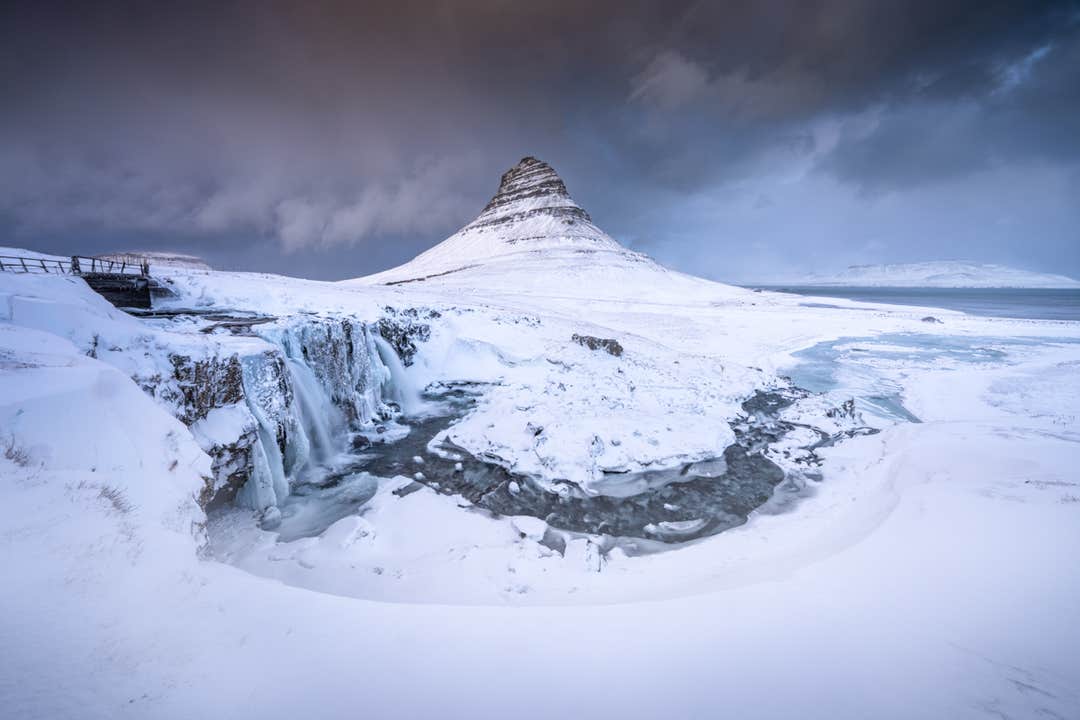描述
概要
描述
加入这场精彩的旅程,探索美丽的斯奈山半岛(Snæfellsnes Peninsula),并享受从雷克雅未克出发的舒适接送服务。由于地貌多样,斯奈山半岛常被称为“冰岛缩影”,是捕捉这片神奇岛屿真正魅力的绝佳之地。这是一场小团体迷你巴士之旅,最多仅19人,确保您获得更加舒适、个性化的旅行体验。
清晨,您的导游将从雷克雅未克的住宿地点接您,随后直接前往冰岛西部的斯奈山半岛。旅途开始时,沿途是起伏的农田,而当您抵达半岛后,景观将变得丰富多变。从崎岖的海岸线到连绵的山脉,第一站将带您前往斯奈菲尔冰川火山(Snæfellsjökull)。
这座火山以其壮丽的锥形山体和全年覆盖的冰雪闻名,被誉为“半岛的皇冠明珠”。几个世纪以来,它的美景激发了无数作家与艺术家的灵感,其中最著名的便是儒勒·凡尔纳(Jules Verne)——他的小说《地心游记》(A Journey to the Centre of the Earth)便是以这里为背景。这次斯奈菲尔冰川之旅绝对不容错过!
接下来,您将前往Ytri-Tunga农场,这里是半岛上著名的海豹栖息地。这些慵懒的海豹喜欢趴在岸边晒太阳,对游客的围观毫不在意,十分可爱。随后,您将探访两个风景如画的渔村——阿尔纳斯塔皮(Arnarstapi)和海德纳尔(Hellnar),这些小镇充满神秘色彩,被认为与冰岛的魔法和传说息息相关。沿着海岸漫步,您可以欣赏奇特的玄武岩岩层,感受波涛汹涌的海浪拍打陡峭悬崖的壮观景象。
其中最著名的地质奇观是Lóndrangar——两座高耸的玄武岩石柱,它们的外形奇特,常被比作一座天然城堡。这里还有壮丽的Djupalonssandur黑沙滩,陡峭的悬崖上栖息着大量海鸟,非常适合观鸟爱好者近距离欣赏半岛丰富的野生动物。
在Djupalonssandur黑沙滩上,您会看到四块巨大的光滑石块,这些是昔日渔民用来测试力量的“举重石”。您的导游会向您讲解每块石头的名字及其历史,而您也可以亲自尝试,看看自己是否能挑战当地渔夫的力量标准!
旅程的最后一站是冰岛最具代表性的山峰——教会山(Kirkjufell)。这座山峰孤独地耸立在青翠的山丘与野花之间,周围环绕着蜿蜒的小溪和潺潺的瀑布,构成了一幅如梦如幻的风景画。这里被誉为冰岛最上镜的山峰,因此请准备好相机,捕捉这座壮丽的自然奇观!您还可以步行至教会山瀑布(Kirkjufellfoss)后方,从最佳角度拍摄山峰与瀑布交相辉映的经典画面。
斯奈山半岛无疑是冰岛最美丽的地区之一。不要犹豫,现在就选择您的出发日期,预订这场冰岛西部的奇幻旅程,亲身感受斯奈山半岛的迷人魅力!













